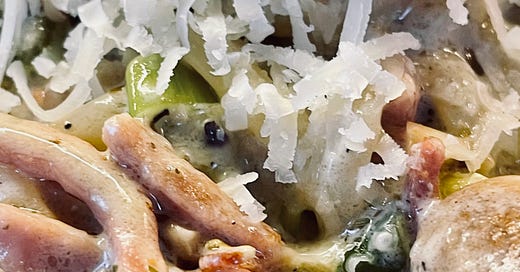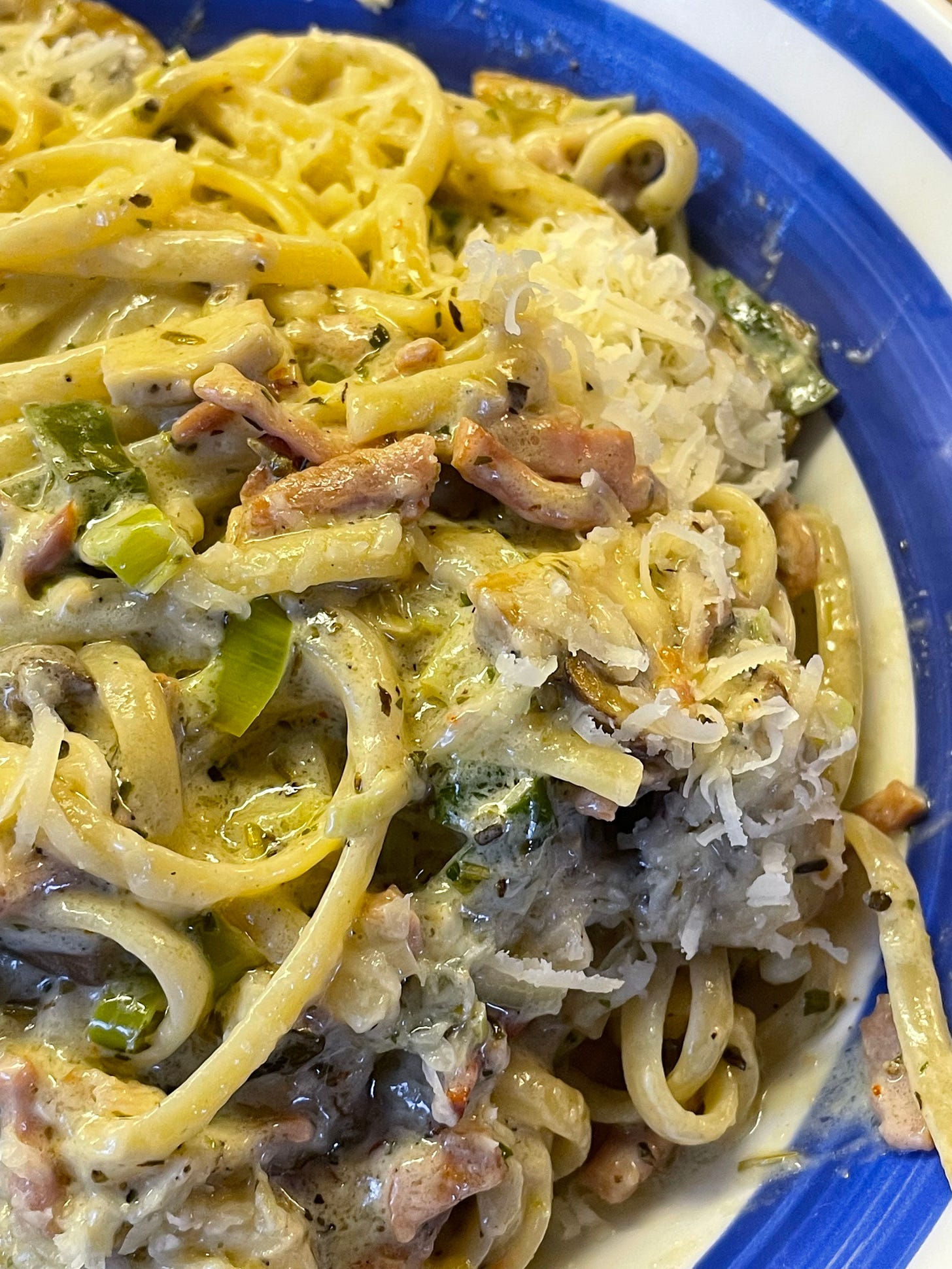The Eternal Pasta Paradox: An Intimate Journey into Perfect Pasta
The Paradox: Why Does My Pasta Always Seem Undercooked?
The Eternal Pasta Paradox: An Intimate Journey into Perfect Pasta
Imagine this: a pot of boiling water, steam rising like a veil lifting on a foggy morning. You drop in your dried pasta, expecting the usual — a satisfying al dente bite. But no, it seems the instructions on the box have once again tricked you. You taste the pasta, and it’s like chewing on rubber bands — too firm, too stubborn to yield its flavor. Frustration bubbles up. Why does this keep happening?
Welcome to the "eternal pasta paradox," where even the simplest ingredients, water, and pasta, can seem like they're working against you. But what if I told you the solution isn't to throw out the box or to blame the altitude of your kitchen, but to rethink the very way pasta is served? Let me share a personal revelation that changed my pasta game forever — a small tweak with an enormous impact, paired with a recipe that is quick, creamy, and downright decadent.
The Paradox: Why Does My Pasta Always Seem Undercooked?
I grew up in a kitchen where pasta was always served in two parts: the pasta, freshly drained and slightly steaming in one bowl, and the sauce, thick and fragrant in another. My mother, like many, loved giving us the freedom to choose our own pasta-to-sauce ratio — a little like a painter choosing how much blue or yellow goes into a painting.
But here’s the thing — every time we scooped the pasta onto our plates and spooned over the sauce, it never felt quite… right. The pasta seemed like it was missing something, like a story with the last page torn out. I used to wonder: Why can’t the pasta just behave? Why can’t it just be perfect, soft, yet with a firm bite? Why does it always taste so underdone, as if the cooking time printed on the box was some cruel joke?
A Lesson from My Favorite Italian Restaurant
I’ve been chasing that elusive flavor ever since childhood, ever since our family used to visit the local Italian restaurant in Einbeck, Germany, back in the 1970s. The place was more than a pizzeria — it was a sensory adventure. The clatter of plates, the sound of voices bouncing off the walls in joyful conversation, the unmistakable aroma of freshly baked bread, garlic, and tomatoes simmering away, inviting you in like a warm hug.
And then there were the people: Piero shouting orders from the kitchen, always with a wide grin; Vincenzo with his endless jokes; and Angela, loud and boisterous, talking with her hands and always making you feel like the most important person in the room. She would present each dish with a flourish, her eyes dancing with passion as she described every ingredient. It was a performance, a celebration — and the pasta was always perfect.
But at home, no matter how hard my mother tried — and she was an excellent cook — the pasta never quite tasted like the pasta from our beloved Italian spot. The texture was different, the flavors somehow less harmonious. What was the secret they knew that we didn’t?
The Italian Way: A Reverence for Pasta
However, in Italy, pasta is treated very differently, almost with reverence. It's the star of the show, served as the "primo piatto" (first main course) in a series of carefully curated dishes:
Antipasto – A starter, often light, such as bruschetta or olives.
Primo piatto – The first main course, usually a pasta or risotto.
Secondo piatto – The second main course, often meat or fish.
Contorno – A side dish, typically vegetables.
Dolce – Dessert, a sweet end to the meal.
Here, pasta is not just a vehicle for sauce, but a canvas that soaks in flavors, allowing each bite to be a dance of taste and texture.
Why the Italian Method Works
Italian cooking transforms the way pasta is served by incorporating it directly into the sauce after boiling — and this is key! The pasta is intentionally undercooked, or "al dente," because it finishes cooking in the sauce. This method lets the pasta absorb the flavors and aromatics of the sauce while achieving the perfect texture.
The Secret Ingredient: Starch and Steeping
When you mix pasta with the sauce and let it steep for 2-3 minutes (or longer if you prefer a softer bite), something magical happens: the starch from the pasta combines with the sauce, creating a silky, flavorful coating that elevates the dish. To help this process, always save a few tablespoons of the pasta's cooking water, which is rich in starch and helps to bind the sauce perfectly.
A Quick, Creamy Carbonara-Style Recipe for the Perfect Pasta Dish
This recipe is inspired by a pasta dish I discovered in the late 1980s at a now-defunct food market hall in Göttingen, Germany. The market had a small Italian stall serving fresh pasta dishes made right in front of you — a rarity in those days. This dish was a revelation: quick, simple, and delicious.
Ingredients for One Portion
(Multiply with the number of portions as needed for more servings)
2 slices of cooked ham, finely diced (about 1 oz / 30g)
2 slices of bacon, cut into small pieces (about 1 oz / 30g)
1 scallion, green parts sliced thin, white parts finely diced
2 mushrooms (like champignons), thinly sliced
1/2 cup cooking cream (100ml)
2 teaspoons crème fraîche or schmand
2 teaspoons sour cream (saure Sahne)
Salt, pepper, and a pinch of sugar
Optional: Freshly chopped herbs, dried Italian herbs, fresh chili (finely diced), garlic (finely diced)
Pasta: 2-3 oz (60-80g) for a starter, 3.5-4 oz (100-120g) for a main course (linguine, tagliolini, or tagliatelle)
3-4 tablespoons pasta cooking water
Olive oil or neutral cooking oil
Instructions
Prepare the Ingredients
Start by bringing a pot of salted water to a boil. As you wait, prepare your ingredients: dice the ham, bacon, mushrooms, scallions, and any extras like garlic or chili. Feel the ingredients in your hands, breathe in the scents — immerse yourself in the process.Cook the Pasta
Add the pasta to the boiling water and cook it exactly as the box suggests. This is just the beginning; the transformation comes next.Start the Sauce
Heat a frying pan over medium-high heat with a bit of oil. Add the diced ham and bacon, letting them sizzle and brown, releasing their rich aromas. Remove them to a bowl but leave those lovely juices in the pan.Layer the Flavors
Lower the heat and add the white parts of the scallion, garlic, and chili. Let them soften gently, coaxing out their flavors. Then, remove them to the bowl with the lardons. Turn up the heat again, add a bit more oil, and let the mushrooms brown, their scent earthy and inviting. Deglaze the pan with the cooking cream, reduce heat to medium, and stir in the crème fraîche and sour cream. Season with salt, pepper, and a hint of sugar to balance the flavors.Bring It All Together
Return the ham, bacon, and scallion mixture to the pan, stirring them into the creamy, aromatic sauce. Just before the pasta reaches the end of its cooking time, scoop out 3-4 tablespoons of the pasta water — this starchy liquid will bring the sauce to perfection.The Moment of Magic
Drain the pasta and add it directly to the sauce. Toss well and let it steep for 2-3 minutes, allowing the flavors to meld, the sauce to thicken, and the pasta to absorb every delicious note. Every bite should feel like a joyful memory, each strand bursting with flavor, silky yet firm.Serve with Passion
Serve immediately, topped with fresh herbs or a sprinkle of grated cheese. Close your eyes, savor the aroma, and let the taste take you back to those unforgettable restaurant meals.
Buon appetito!
Rekindling the Magic of Meals Shared Together
So, there you have it — a recipe that’s more than just a list of ingredients. It’s a piece of a story that began in a warm, bustling restaurant in the 1970s and has traveled across time and space to find its way to your kitchen today. I hope you’ll try this method, and when you do, I’d love to hear about it. Did it bring back memories for you? Did you feel the magic, too? Let’s share our stories and celebrate the little moments that make life delicious.
Join the Journey and Share the Love!
If this post brought you a bit of joy, a memory, or just a good laugh, please share it with your friends and family. And if you haven't subscribed yet, consider joining me on this journey through kitchens, stories, and flavors from all over. More delicious recipes, heartfelt stories, and kitchen secrets are just around the corner.
Yours, Jay
Bringing you these recipes and sharing the culinary stories behind them is a true passion of mine.
Each twist, tweak, and taste test comes with the joy of creativity—and yes, a little bit of cost, too. If this recipe resonated with you and added a touch of nostalgia or delight to your day, I’d be incredibly grateful if you’d consider leaving a tip. Or, better yet, indulge in a monthly or yearly subscription to support this publication.
Your generosity helps keep these flavors alive and ensures I can continue exploring, experimenting, and sharing them with you.







I have found that there is a huge difference between different pastas. I used to think they were all pretty much the same, but then I bought some of the expensive, Italian, copper extruded stuff, and it is delicious. The rough texture absorbs the sauce, and the texture is always "chewy", my favorite. I would never have thought it would make such a difference since pasta contains so few ingredients, but based on my taste tests, the difference between brands is huge.
YUM. :0)
The Pasta Paradox! Makes me smile and now I'm hungry. Again.